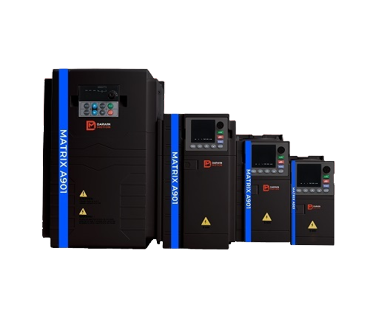Posted on 22nd Dec 2022

This CM Industry Supply Automation article will outline the must-know factors when looking to dimension a VFD for a drive system. You can check out the load characteristics reviews, an important element that will be find out by the end application.
Perhaps the most crucial aspects of appropriately selecting a variable frequency drive (VFD) is checking that it has adequate volume in terms of KW and minimal current rating to permit the motor to produce the essential torque right across the proposed speed range while permitting for any overload time frame.
Loads can be categorized into following types:
The three most common load characteristics are:
Constant torque
The very initial step to dimension a drive system comes from considering the driven machine application. Because of constant torque profiles augers - drills, screw compressors like chillers, positive displacement pumps and conveyors they are considered heavy duty for motors, which are handling loads.
Variable torque
While starting, motors handling applications like fans and centrifugal pumps need little overload i.e. their beginning torque is even comparatively low by comparison with some Heavy Duty applications.
Constant power
Many machines such as grinders and lathes, and winders load a motor with CP (constant power) that means power remains continuous, regardless of the speed or torque.
Continuous and cyclic loads
Above three common load types can either be categorized as continuous or cyclic. When dimensioning your drive system in cyclic load as there could be likely overload repetition caused by common starting and stopping which can conceal the thermal capabilities of motor.
Regenerative applications
Many machines use an induction motor, which can work regenerative. At particular working points, the driven machine stored inertia can cause the motor to work like a generator and causes VFDs DC bus voltage to increase. If this left unchecked, it can result in the VFD tripping and the load to freewheel out of control. The regenerative applications often need installation of DBR (dynamic brake resistors) which will burn off extra regenerative energy as heat, but this solution type is not always effectual way to control regenerative energy. Also it might be the lowest up-front cost choice.
Constant torque / heavy duty (HD), Variable torque / normal duty (ND), and Constant power (CP) are three usual load handled by motors.
Each load characteristics can be any continuous or cyclic – cyclic loads can make exact challenges regarding the complete drive system performance and should be sensibly considered during the planning stages.
Applications that might be regenerative need some type of mitigation technique either in the dynamic braking resistors form or by fitting a Variable Frequency Drive with an active ‘front end’. It is something considered as the most efficient solution as they will allow regenerative current to flow back into the mains without the requiring braking resistors connection.
Looking for professional support?
CM Industry Supply Automation offer sales, support and repair services of Lenze Drive, Siemens Drive, Yaskawa Drive, KEB Drive, Danfoss drive and more. We help in OEMs dimension and installing industry-leading, inventive variable speed drives across many industries.
We supply top-notch variable speed drives that can help you maximize the application performance, and improve the energy efficacy of your project.
If you want to learn more about our professional support service, get in touch with CM Industry Supply Automation variable frequency drive professionals today.